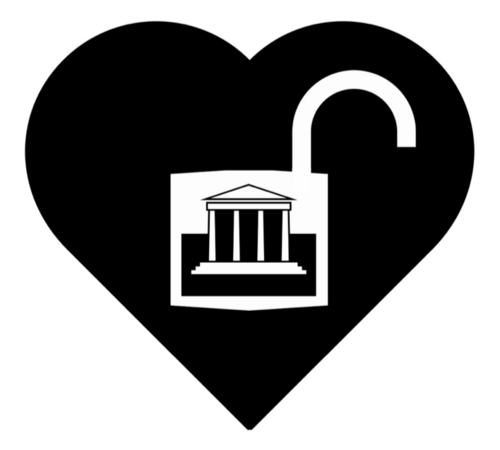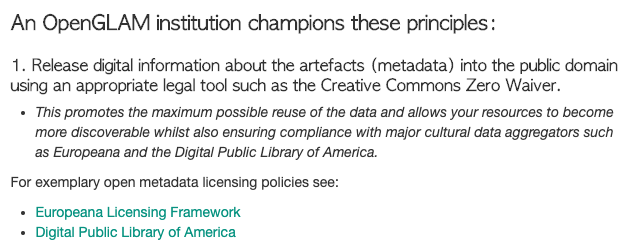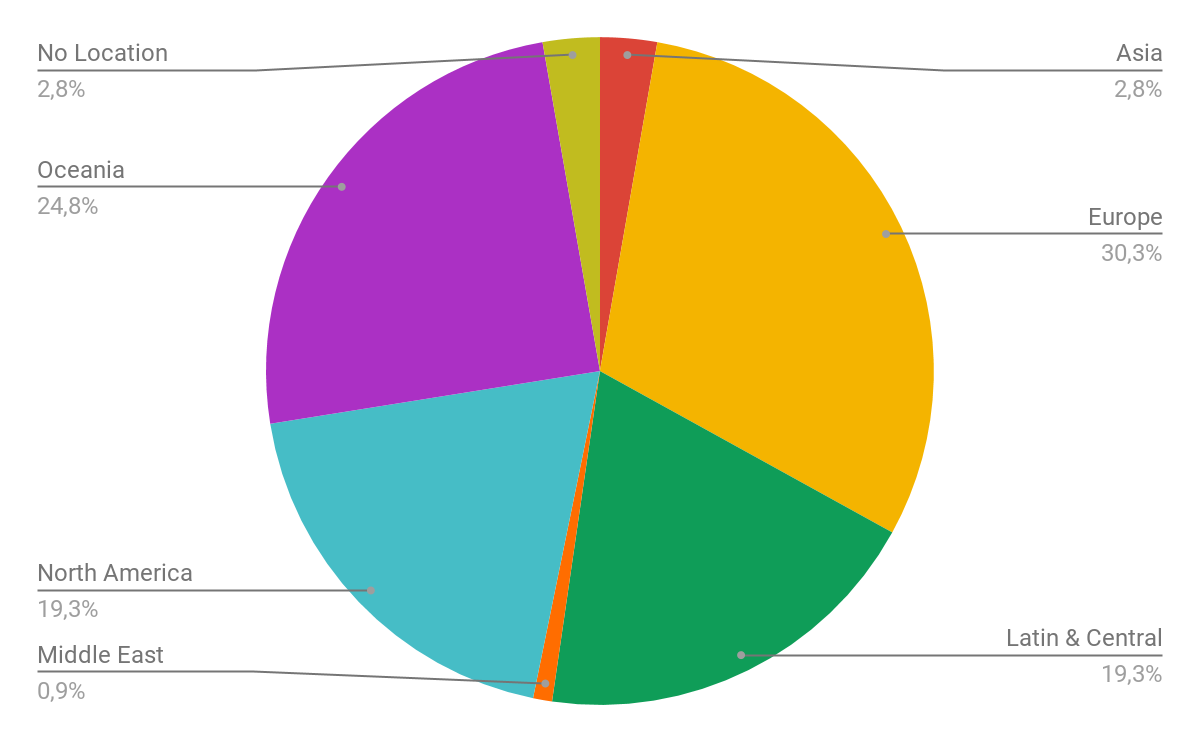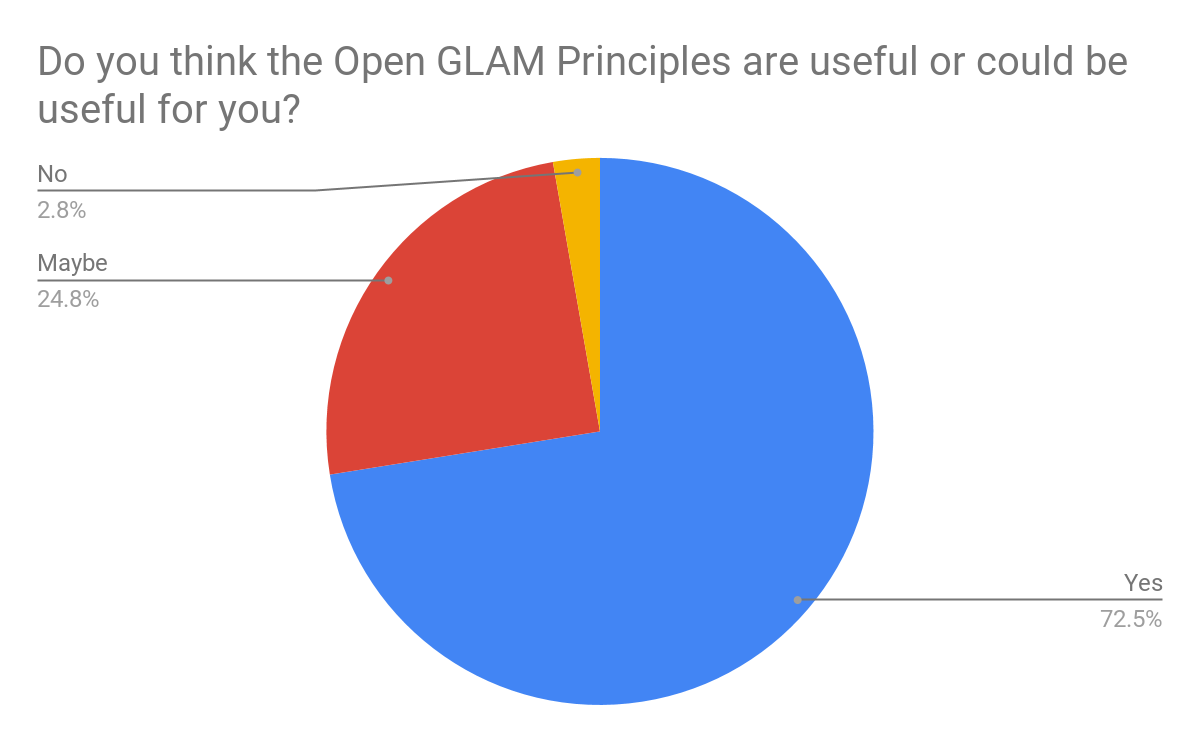OpenGLAM Principles: ways forward to Open Access for cultural heritage
OpenGLAM?

In the early 2010s, OpenGLAM (Galleries, Libraries, Archives & Museums) was set up: a network that supports exchange and collaboration between cultural institutions that support Open Access. OpenGLAM is an initiative and working group of the Open Knowledge Foundation (OKFN), currently known as Open Knowledge International, and was co-funded by the European Commission. Creative Commons, the Communia Association and the GLAM-Wiki community were allies from the start.
Especially in Europe, several local OpenGLAM groups were formed. The network does outreach via several communication channels: a dedicated website, and the OpenGLAM Twitter account; and it has worked together with the Public Domain Review, another OKFN initiative but is now independent.
In order to outline the shared values behind free and open access to digital cultural heritage, the working group drafted a set of OpenGLAM Principles in 2013, with the aim to define what being an open institution in the cultural heritage sector meant.

Screenshot from the OpenGLAM Principles as drafted in 2013
As Open Access has become broadly adopted in the cultural sector, the need for stronger collaboration between stakeholders in this area has grown. In 2018, a group of people connected to Creative Commons, the Wikimedia Foundation and Open Knowledge International took initiative to revitalize the OpenGLAM network and to think about next steps. Creative Commons is doing fundamental work in this space, helping cultural heritage institutions release their content through their standard licenses and by offering training, such as the Creative Commons Certificates. The first step was to breathe new life in the @OpenGLAM Twitter account through an open call for contributors, and to run a “temperature check” survey on the OpenGLAM Principles. Here, we want to present some conclusions and next steps to be taken. You can access and comment on the full analysis of the survey here.
Surveying the OpenGLAM Principles
We publicized the survey through social media, mainly through the @OpenGLAM account, and we reached out to specific people whom we wanted to take the survey. We received a total of 109 responses. Most of the participants belonged to Europe (30%) and Oceania (25%), followed by North America (19%) and Latin & Central America (19%). We obtained a very low number of responses from Asia and the Middle East, and no response from Africa. Aside from the flaws of our outreach strategies, this also speaks to one of the problematic aspects of the Principles: they are only available in English, therefore adding an extra barrier to participation.

We also wanted to know the relationship that respondents had with GLAM institutions. Librarians were the most active in the survey (27%); followed by museum professionals (11%), academics and community organizers, i.e., Wikimedians in Residence (23%). Only 7% belonged to Archives, followed by 8% of people working as advisors or external consultants with a GLAM organization. 21% responded that they occupied more than one role or that were working for an institution that comprises more than one function.
We discovered that the Principles are not well known — almost half of the respondents (45%) weren’t aware of them before taking the survey. Then we asked participants to state whether they thought the Principles could be useful for their work, obtaining a vast majority of positive answers (72%), with 25% considering that “maybe” and only a small percentage claiming that they didn’t consider them they could be useful (3%).

Among those that did not consider them useful, most of the critiques were around the lack of support from an official organization, their lack of communication and connection to cultural heritage institutions, and the absence of a support structure for them. As one respondent summarized:
“Open Data, etc. are not relevant organizations in the cultural field. They need to be supported by relevant organizations. We need to have guidelines and values to discuss; to build up a better structure and network.”
Of those who considered them useful, most of them indicated the utility of having a framework and a set of values to use as a guide for their work. However, in their current version it seems that the Principles offer little to no guidance. Alongside with the limited scope of the examples provided, their primary focus on the release of data, the lack of acknowledgement of the tension between open access and the interests and rights of other stakeholders, such as marginalized groups or indigenous communities, and the absence of a broader, global perspective on cultural heritage, were signaled as concerns that need to be addressed in a possible update. As one respondent put it:
“Information with personal, cultural or social constraints, such as traditional knowledge, should not just be ‘released’. We require some acknowledgement of the complexities of cultural knowledge.”
Participants of the survey were also asked whether they thought the Principles needed to be updated, and if so, how. Respondents indicated that they wanted to see more guidance on how to apply the principles in practice. They would appreciate more and better examples of a more diverse set of institutions working with Open Access. Participants also expressed the need to set up a better structure that accounts for the maintenance of the Principles. The lack of connection with values and broader useful declarations also appeared as a weak point of the Principles. As another participant said:
“Greater emphasis must be placed on the human rights perspective. Access to cultural heritage is a right enshrined in several human rights charters and declarations.”
Beyond this immediate evaluation of the OpenGLAM Principles, we need to ask ourselves: what is their broader function and usefulness? We know that cultural heritage institutions need more and better guidance to apply Open Access policies to collections. There is a growing amount of evidence that backs this statement, including the reports commissioned by Europeana around the accuracy of rights statements and the survey of GLAM open access policy and practice made by Andrea Wallace and Douglas McCarthy, that show the disparity in the application of Open Access policies across cultural heritage institutions. And while more training, such as the CC Certificates, and better advocacy and tooling can be set in place, recommendations and declarations could also be useful elements for advocates working within or with institutions.
The list of Declarations that support Open Access maintained by the Open Access Directory has a strong focus on Open Access publication of scholarly communication and scientific data, and shows a clear gap in principles or declarations that address cultural heritage specifically, including some of the concerns around traditional knowledge, indigenous rights, or other problematic aspects of digitization & open access release.
We hope that we can come together to work in a broader conversation with the cultural heritage sector around better guidelines for open access. As part of this broader conversation, we are currently working on a draft and having monthly calls with advocates and practitioners. We will have more follow-up strategies during the year, in order to involve as much people as possible.
If you are interested in joining the conversation, please get in touch through the OpenGLAM mailing list, join the monthly open community call that is announced there, or join the #cc-openglam channel on Creative Commons’ Slack.
You can read, and comment on an extensive report of the OpenGLAM Principles survey here.
